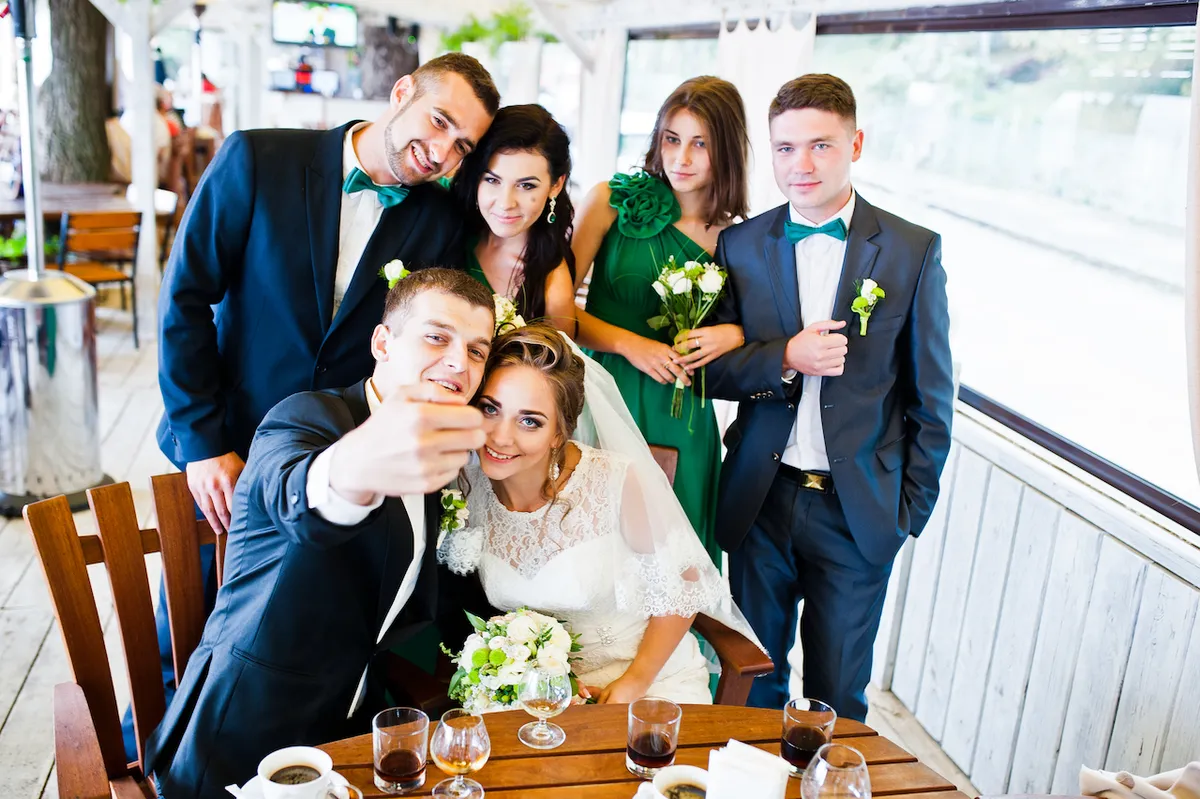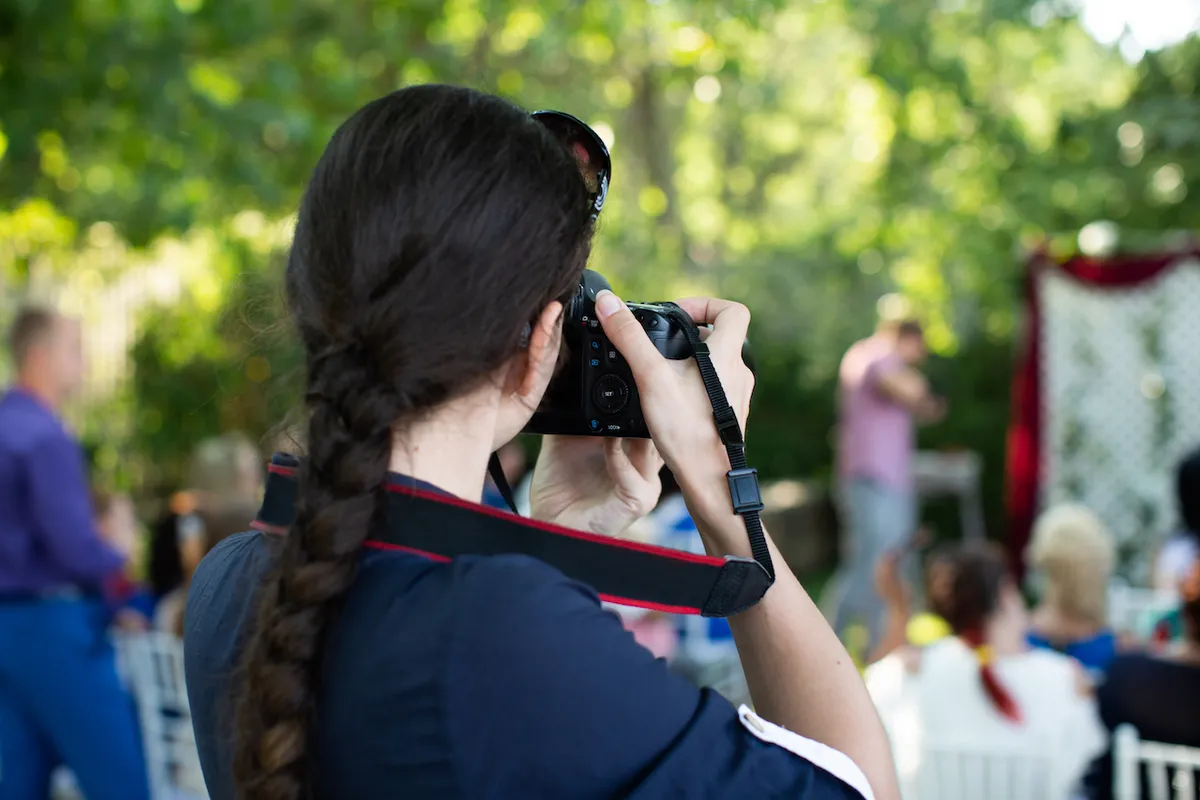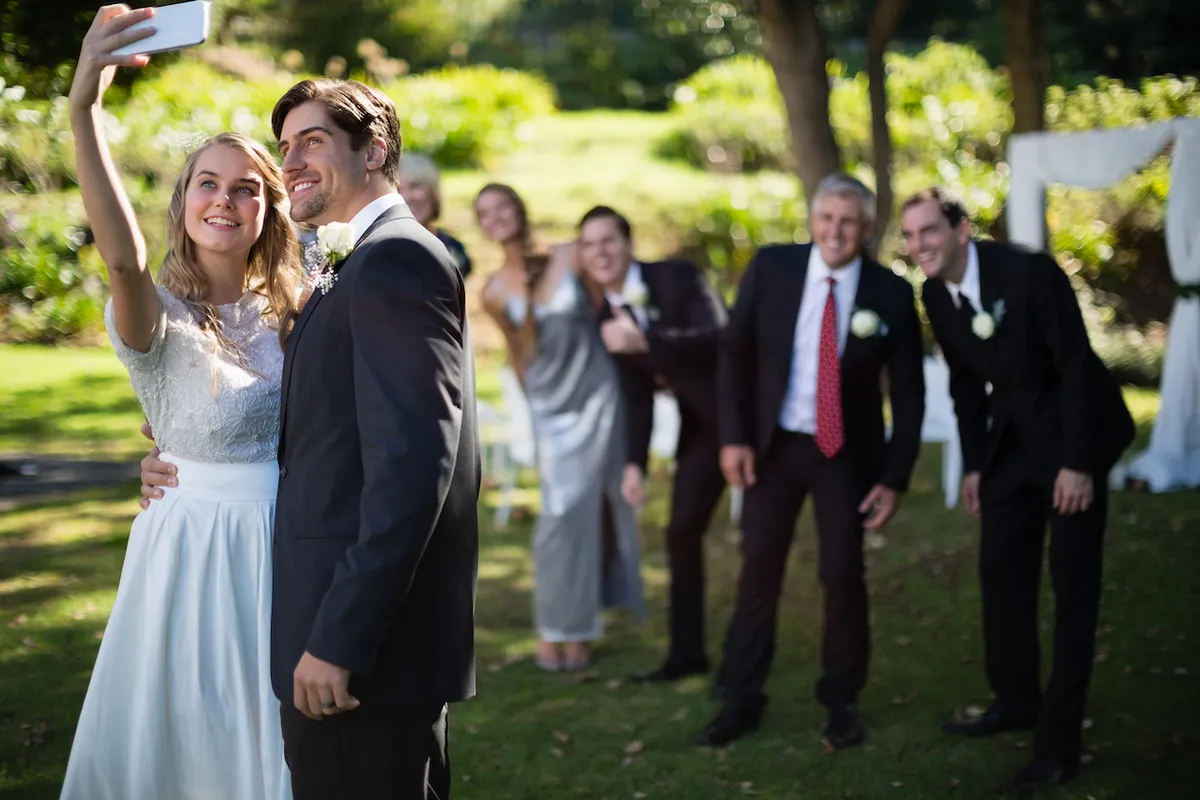
Capturing a couple's special day in photos can be tricky. Did you know, wedding photography is often considered an art form because it captures once-in-a-lifetime moments? Our guide offers pro tips and secrets to snap stunning pictures that last forever.
Dive in and make every shot count!
The Importance of Wedding Photography
Wedding photography plays a crucial role in capturing priceless memories, telling the story of the special day, and creating beautiful heirlooms for generations to come. The art of wedding photography is essential in preserving the emotions and moments of this milestone event.
Capturing priceless memories
Photos are like time machines. They take you back to the joy and love of your special day. A wedding photographer has the job of catching those laughs, tears, and tender touches. These moments become beautiful heirlooms that families treasure for generations.
Capturing love in wedding photography is an art. It tells a story without words. Every smile, every look between the couple shows their journey together. Professional wedding photography freezes these memories so they never fade away, even long after the last dance ends.
The art of storytelling
Wedding photography is about capturing and conveying the unique story of each couple's special day. With a keen eye for detail, photographers narrate the emotions, connections, and significant moments through their lens.
From the tender glance exchanged during the vows to the joyous celebrations on the dance floor, every image becomes a chapter in the timeless love tale preserved for generations.
Incorporating storytelling elements into wedding photography involves seeking out authentic interactions and candid moments that reveal genuine emotions. By skillfully framing these instances against complementary backgrounds or using natural light to enhance mood, photographers craft a visual narrative that beautifully unfolds from beginning to end, immortalizing each moment as part of an enduring love story.
Creating beautiful heirlooms
In wedding photography, creating beautiful heirlooms is about capturing timeless moments that will be cherished for generations. By focusing on genuine emotions and candid interactions, photographers can create images that tell a unique story of love and joy.
Using techniques such as documentary and fine art photography, photographers can produce stunning images that evoke strong emotions and serve as treasured keepsakes for the couple and their families.
Photographers also use artistic composition and editing to enhance the visual appeal of the photos, ensuring they stand out as timeless pieces of art. These photographs become more than just pictures; they transform into cherished memories frozen in time, representing the beginning of a new family legacy.
Techniques for Mastering Wedding Photography
Understanding lighting, mastering posing techniques, and capturing authentic emotions are essential for mastering the art of wedding photography. These techniques help create stunning and timeless images that capture the essence of a couple's special day.
Understanding lighting
Good wedding photography requires understanding lighting. Here are some techniques to master it:
- Use natural light for outdoor shoots, such as during the golden hour.
- Utilize off - camera flash to control and enhance light indoors.
- Employ reflectors to bounce and soften light for flattering portraits.
- Understand the impact of different light qualities like soft, hard, or diffused light.
- Experiment with backlighting to add depth and drama to your photos.
- Consider the color temperature of light sources and adjust white balance accordingly.
- Learn how to create dramatic silhouettes using backlighting techniques.
Posing techniques
Mastering posing techniques is essential for creating beautiful wedding photographs. Here are some key techniques to master:
- Encourage natural and relaxed poses to capture genuine emotions.
- Use prompts and actions to evoke candid moments and interactions.
- Focus on creating flattering angles for the couple, paying attention to body positioning.
- Utilize the surroundings and props creatively to add depth and visual interest to the images.
- Direct the couple with clear and concise instructions, ensuring they feel comfortable and confident.
- Capture dynamic movement and genuine connections between the couple during posed shots.
- Experiment with different perspectives and compositions to add variety to the poses.
Mastering emotions
Capturing genuine emotions is crucial in wedding photography. It adds depth and authenticity to the images, making them truly memorable. Here's how to master emotions in wedding photography:
- Establish a connection with the couple and their guests, putting them at ease.
- Look for candid moments of joy, laughter, and tears throughout the day.
- Capture subtle gestures and glances that convey love and affection.
- Encourage natural interactions rather than forced poses for more genuine emotions.
- Be attentive to the mood of the occasion, adjusting your approach to match the atmosphere.
- Use composition and framing to emphasize emotional connections between people.
- Pay attention to body language to capture unspoken feelings and interactions.
Essential Gear for Wedding Photography
Cameras and lenses, lighting equipment, and backup gear are essential for capturing the perfect wedding moments. Interested in learning more about setting up your wedding photography gear? Keep reading to find out!
Cameras and lenses
When photographing weddings, having the right cameras and lenses is crucial. Invest in a full-frame DSLR camera with high resolution to capture sharp and detailed images. Pair it with prime lenses for beautiful portraits and wide-angle lenses for stunning venue shots.
A fast telephoto lens will also be handy for capturing intimate moments from a distance without interrupting them. Don't forget to have backup equipment ready in case of any technical issues during the event.
Remember, finding the perfect balance between camera bodies and lenses will allow you to be versatile while shooting weddings, ensuring that you can capture every precious moment beautifully without missing a beat.
Lighting equipment
Lighting is crucial in wedding photography. For indoor venues, having a speedlight or off-camera flash can provide additional light and eliminate harsh shadows. A light diffuser helps soften the light and create flattering portraits.
Outdoor weddings may require reflectors to bounce sunlight onto the subjects, filling in any shadows for even lighting. Additionally, having spare batteries and light stands is essential for ensuring continuous lighting throughout the event.
Remember that understanding how to use lighting equipment effectively can greatly enhance your wedding photography skills and ensure you capture beautiful moments no matter the venue or conditions.
Backup equipment
Ensure you have backup cameras and lenses in case of technical issues. It's also essential to have extra memory cards and batteries for prolonged shooting hours. Additionally, consider bringing portable lighting equipment in case the venue's lighting is inadequate.
Having backup gear will give you peace of mind and ensure you don't miss any important moments during the wedding day.
Remember that having a backup plan with equipment can save the day if something goes wrong unexpectedly. Always be prepared to handle any unforeseen circumstances by having spare gear readily available as part of your wedding photography kit.

Tips for Becoming a Successful Wedding Photographer
Building a strong portfolio, mastering marketing and networking strategies, and continuously improving your skills are key to becoming a successful wedding photographer. It's also crucial to build strong client relationships and stay up-to-date with industry trends.
Building a strong portfolio
To create a strong portfolio for wedding photography, consider the following:
- Showcase a variety of wedding styles and venues to demonstrate versatility.
- Include images that capture genuine emotions and moments to connect with potential clients.
- Highlight your best work that reflects your unique style and vision as a photographer.
- Incorporate both posed portraits and candid shots to display your skills in different situations.
- Present high-quality, well-edited photos to impress prospective clients.
- Arrange your portfolio in an organized and visually appealing manner to engage viewers.
- Seek feedback from peers or mentors to continuously improve and refine your portfolio.
Marketing and networking strategies
To market your wedding photography business and build a strong network, follow these important strategies:
- Utilize social media platforms such as Instagram, Facebook, and Pinterest to showcase your work and engage with potential clients using hashtags like #weddingphotography and #bridalphotography.
- Attend bridal shows and industry events to meet with potential clients and other vendors in the wedding industry.
- Collaborate with local wedding planners, venues, and other wedding vendors to offer mutual referrals and cross-promotion.
- Create a professional website showcasing your portfolio, client testimonials, and blog posts about weddings you have photographed.
- Offer special promotions or referral incentives to encourage past clients to recommend your services to friends and family.
- Join professional photography associations or groups to network with other photographers and learn about industry trends.
- Consider investing in targeted online advertising to reach engaged couples in your local area.
Building client relationships
To build strong client relationships in wedding photography, communication is key. Listen attentively to their vision and preferences, and offer your professional expertise to ensure their needs are met.
Establishing trust and rapport will not only result in satisfied clients but also potential referrals for future business. Show genuine interest in their love story and make them feel valued throughout the process, from the initial consultation to the final delivery of their treasured wedding memories.
Engaging with clients involves understanding their unique personalities and capturing authentic moments that reflect who they are as a couple. Tailoring your approach to each client shows respect for their individuality, creating an experience that goes beyond just taking photographs.
Staying up-to-date with industry trends
To thrive as a wedding photographer, it's crucial to stay updated with the latest industry trends. Keep an eye on emerging photography styles like documentary, portrait, and fine art.
Stay informed about new editing techniques and composition methods that can elevate your work. Networking with other professionals in the field and attending workshops or training sessions are great ways to stay current.
Being aware of shifts in client preferences and technological advancements will help you adapt your approach and gear accordingly. Engaging with online communities, following influential photographers, and subscribing to industry publications can also provide valuable insights into the evolving landscape of wedding photography.
Continuously improving your skills.
To thrive in wedding photography, continually improve your skills. Stay updated with the latest trends and techniques in wedding photography styles, compositions, and editing. Attend workshops, join online communities, and seek constructive feedback to enhance your craft.
Experiment with new concepts and approaches to keep evolving as a versatile wedding photographer. Embrace challenges as opportunities for growth and stay passionate about refining your artistry in capturing love and emotions through bridal photography and documentary wedding photography.
Remember that mastering wedding photography is an ongoing journey. Adapt to changing client preferences, technological advancements, and industry demands by regularly honing your skills.

Conclusion
In conclusion, mastering wedding photography involves understanding lighting, posing techniques, and emotions. The essential gear includes cameras, lenses, and backup equipment to ensure seamless coverage.
To succeed in this field, building a strong portfolio and continuously improving skills are key. Implementing these practical strategies can lead to significant improvements in capturing love through wedding photography.
Keep exploring new trends for continued growth and impact in the art of wedding photography!
Get legally married online
In partnership with Courtly, get legally married online.
From start to “I do.” Courtly team is fully committed to the cause: getting you married. They've done more remote weddings than anyone. Thousands of couples have counted on Courtly and we know what it takes to secure your legal marriage certificate.
Also, enjoy an exclusive discount available only to the MarryOnChain community! Use code MARRYONCHAIN to get $75 off your wedding.
RelatedRelated articles
All posts




